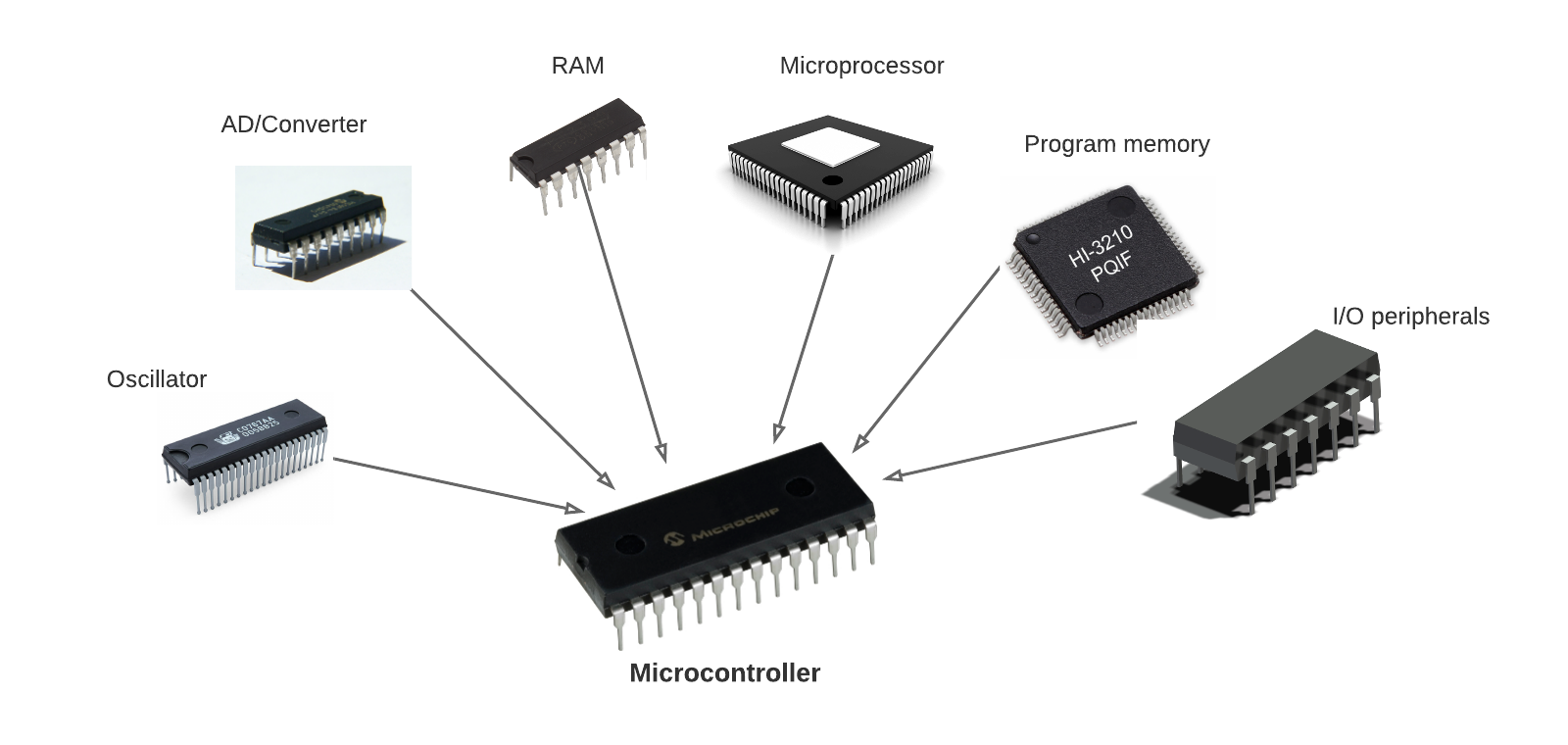What’s the difference between a microcontroller and a microprocessor?
A microcontroller is an integrated circuit (IC) chip that functions as a miniature computer. It has programmable input/output (I/O) peripherals, memory, and one or more CPUs. Along with a small amount of RAM, program memory in the form of ferroelectric RAM, NOR flash, or OTP ROM is also frequently included on chip. Unlike the microprocessors found in personal computers and other general-purpose applications, which are made up of a variety of discrete chips, microcontrollers are intended for embedded applications.
A microprocessor, on the other hand, is a central processing unit (CPU) contained on a single chip. It is a computer’s “brain” and is made to carry out arithmetic and logic functions. Generally speaking, microprocessors are found in multipurpose computing devices like servers, laptops, and desktop PCs.
Microprocessors and microcontrollers differ primarily in the following ways:
- Integration: Microprocessors lack memory and I/O peripherals, whereas microcontrollers do. This reduces the flexibility of microcontrollers while making them more compact and easier to use.
- Application: While microprocessors are usually designed for general-purpose applications, microcontrollers are typically designed for embedded applications. This indicates that while microprocessors are typically optimized for high performance and expandability, microcontrollers are typically optimized for low power consumption and real-time performance.
And this is my relevant Microcontroller vs Microprocessor article. Hope you enjoy reading it!

A microcontroller and a microprocessor are both essential components of electronic devices, but they differ in terms of their architecture, capabilities, and applications.
A microcontroller is a compact integrated circuit (IC) that combines the functions of a microprocessor, memory, and input/output peripherals on a single chip. It is designed for embedded systems and small-scale applications. Microcontrollers are commonly found in devices such as consumer electronics, home appliances, automotive systems, and industrial control systems.
Key characteristics of microcontrollers include:
- Integration: Microcontrollers integrate all major components, including the central processing unit (CPU), memory (RAM and ROM), input/output ports, timers, and serial communication interfaces, onto a single chip.
- Peripherals: Microcontrollers are typically equipped with a variety of built-in peripherals, such as analog-to-digital converters (ADCs), digital-to-analog converters (DACs), UART (Universal Asynchronous Receiver-Transmitter), SPI (Serial Peripheral Interface), I2C (Inter-Integrated Circuit), and PWM (Pulse Width Modulation) controllers. These peripherals simplify the interfacing of the microcontroller with external devices.
- Real-time capabilities: Microcontrollers often have real-time operating systems (RTOS) or real-time features, allowing them to respond quickly and predictably to real-time events.
- Low power consumption: Microcontrollers are designed to operate with low power consumption, making them suitable for battery-powered devices or energy-efficient applications.
On the other hand, a microprocessor is a general-purpose programmable device that performs arithmetic, logic, control, and input/output operations. It focuses primarily on executing instructions and relies on external chips or components to provide additional functionality. Microprocessors are commonly used in personal computers, servers, high-performance systems, and devices that require substantial computational power.
Key characteristics of microprocessors include:
- Processing power: Microprocessors are optimized for high-speed processing and complex calculations. They typically have higher clock frequencies and larger instruction sets than microcontrollers.
- External components: Unlike microcontrollers, microprocessors do not integrate peripherals and memory on a single chip. They rely on separate chips or modules for memory, input/output, and other functionalities.
- Flexibility: Microprocessors offer more flexibility in terms of software and programming. They can run a variety of operating systems, such as Windows, Linux, or macOS, and support a wide range of applications.
- Higher power consumption: Due to their higher processing capabilities, microprocessors tend to consume more power compared to microcontrollers.
In summary, microcontrollers are compact, integrated devices that combine processing power, memory, and peripherals on a single chip. They are commonly used in embedded systems and applications that require low power consumption, real-time control, and integration of various functions. Microprocessors, on the other hand, are general-purpose processors designed for high-speed processing and complex calculations, often used in personal computers and systems that require significant computational power.

